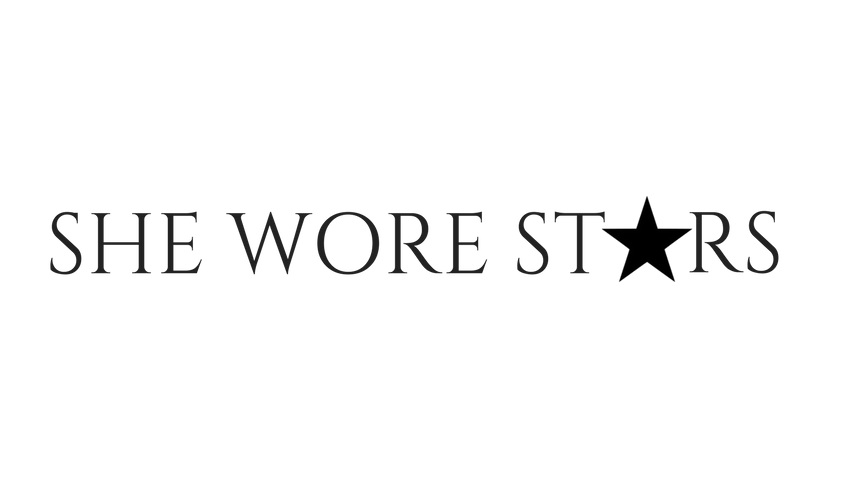The Golden Age of Cinema, From Photoplay to... Photoshop???
When it comes to old films, I have some favorites, and Pillow Talk is one of them. Starring Doris Day and Rock Hudson, it may not be fodder for an Academy Award but who cares? It's hilarious!
Doris Day plays a non-nonsense woman who falls in love with a complete womanizer (think Sam on Cheers! or Will Smith's Hitch). He even has his own jingle to charm his lady-friends. "You are my inspiration... Eileeeeeeen..." he croons. All he has to do is switch out the name of his targeted female at the end of the line. It's brilliant. More men should do it just to get a laugh.
And it does make me laugh, and it was the reason I decided to read up on Doris Day... and her story led me down a rabbit hole of research about the history of retouching photos. I thought I knew a lot about Hollywood, but I certainly didn't know this.
Doris Day: THE 1940s FASHION INFLUENCER WHO KEPT IT HONEST
I have learned a lot about Doris by reading the biography, Doris Day: The Untold Story of the Girl Next Door. If you are a fan of hers, I definitely recommend it!
Doris has never been arrogant about the way she looks. Indeed, she almost revolted against the beauty standards of her film star days. In one interview with the Daily News she said, "I don't have 'it'. They crimp some false eyelashes onto me, they arch my eyebrows clear up to here, and they stuff me full of padding. All I look like is something that is trying to be a Hollywood glamour girl.... I don't want any young girls going home and crying themselves to sleep on their pillow because they think they are not as beautiful as I am. I'm a plain dame."
YOU ARE MY INSPIRATION, GINA RODRIGUEZ
Listening to Doris recount all the ways that she was made to look completely different than she truly was made me think about an interview with Gina Rodriguez I had recently read in the Huffington Post. She talked about the uncanny experience of seeing photos of herself that she could see where drastically changed. One can't help but admire her frankness.
I wondered how classic celebrities would have reacted to Photoshop had it existed in their day at the level it does now. But then a quick Google search, and quickly I find out that retouching did exist... photo after photo of historic pictures show entire objects being deleted. History was being rewritten indeed. I didn't know which was more unsettling, that or its counterpart of re-inventing the perfect image of a woman. One anecdote told of a retoucher spending six (six!) hours perfecting a photo of Joan Crawford.... all by hand. I had to know what went into a process like that...
Indeed the process was lengthy... sneaky... and kind of admirable in a MacGyver kind of way. For example, they would cut out portions of other photos and paste that portion on top of another photo... people that weren't even there were suddenly instantly appearing in a composite image that was then re-photographed! Other methodologies included scraping the negatives with knives (to reduce the waistline or remove a few wrinkles, for example), or even drawing or painting on top of it (usually with a graphite pencil... immediate contouring anyone?).
How was the retouching movement met? With condemnation almost as swift as the technology of photography itself. The 1881 book The Art and Practice of Silver Printing commented, “An old man without wrinkles is an unnatural and ghastly object—the ‘marble brow’ of the poet should be left to literature.”
Put That Photo Retouching App Down! said doris
With the advent of apps on your phone that will literally transform your face in an instant, impossible beauty standards have gone viral. This isn't news to anyone. Even I have bought into the "impossible beauty dream" at times, and I guess that's what makes me admire Doris Day even more....
You see, in my estimation, it is "in vogue" to be honest about impossible beauty standards... you hear actresses confessing when Photoshop was used, rejecting body images studios might impose on them, and then there are the "naked" pictures without makeup that grace the cover of magazines from time to time (though I honestly wonder about the truth of these purportedly makeup-less photos... there is such a thing as super filtered lighting, which from what I can tell was the quickest and easiest way to make someone look gorgeous on camera back in the day).
But in the 1950's? These kinds of bold statements weren't so prevalent. Doris pioneered an honesty that is startlingly relevant today. Emulating the less meaningful characteristics of glamorous stars is fun (their lipstick color, the dress they wore to the Oscars), but learning from the way they were trailblazers in more meaningful ways is a different thing altogether.
What do you think? Was it harder to be a star back then or now?






I love this photo of Irene in a soft, off-the-shoulder, pleated blouse. This is very on-trend right now, and rumor has it that Spring 2017 will be all about layering this kind of top over a simple tank top. The Alexander Wang top pictured below is perfect to do just that.